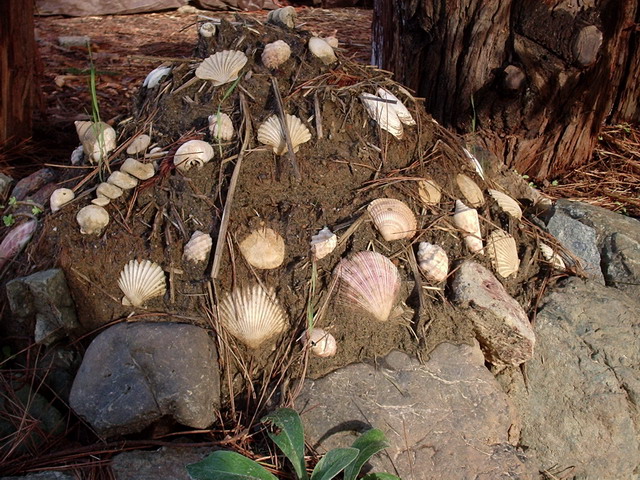The
Making
of a 
![]()

![]()
As of now all that remains to be done on the cob bench is to: 1) apply plaster, and 2) inlay decorative items. I hope that the information provided in this section will allow a future student to proceed on to the next and final stages of completing the cob bench.
The plaster: After doing research I recommend to first apply an earthen plaster to the bench and then, on top of this, a lime plaster into which you can inlay seashells, glass, and mirror. Alexandra, one of my natural building group members, did some test plasters for her project and came up with a strong earthen plaster. This consisted of 2 parts sand, 1 part clay, and 2 parts manure. However, this mixture should be tested alongside other mixtures just to be sure of its strength since using different sand and clay may effect the mixture's strength. A lime plaster that would go on top of this might also prove to be a bit tricky for two reasons. First, making lime needs to be done with care and caution. On the links page you can read about this process. Secondly, lime should be made sooner than later since lime needs adequate time to "slack." Finally, I've recently called Ace Hardware in Arcata and Arcata Do It Best Lumber and inquired if they had lime for sale. Unfortunately, they did not and were unfamiliar with the material. Future students may also wish to contact The Mill Yard which is located on the 101 between Arcata and Eureka and, possibly, the ceramics lab at HSU. More indepth information about these plasters can be researched and asked about at CCAT.
The decoration: The glass, seashell, and mirror can all be found at CCAT. These items should be placed into the final plaster layer. Be sure not to leave any jagged edges pointing out so no one will get hurt.
Good luck and don't forget to have fun!




The top two pictures show the glass bottles and glass dish that can be used for the bench. The first bottom picture shows the mirror that is available and the last picture shows the type of seashells that are available from CCAT.